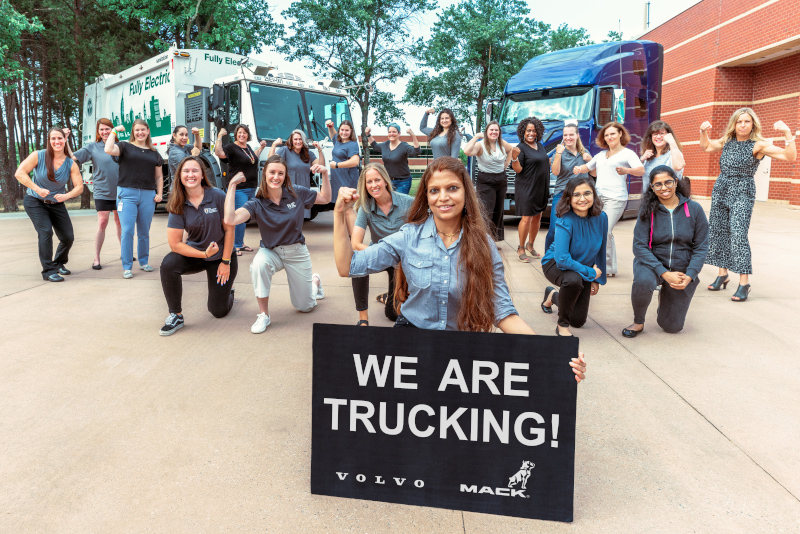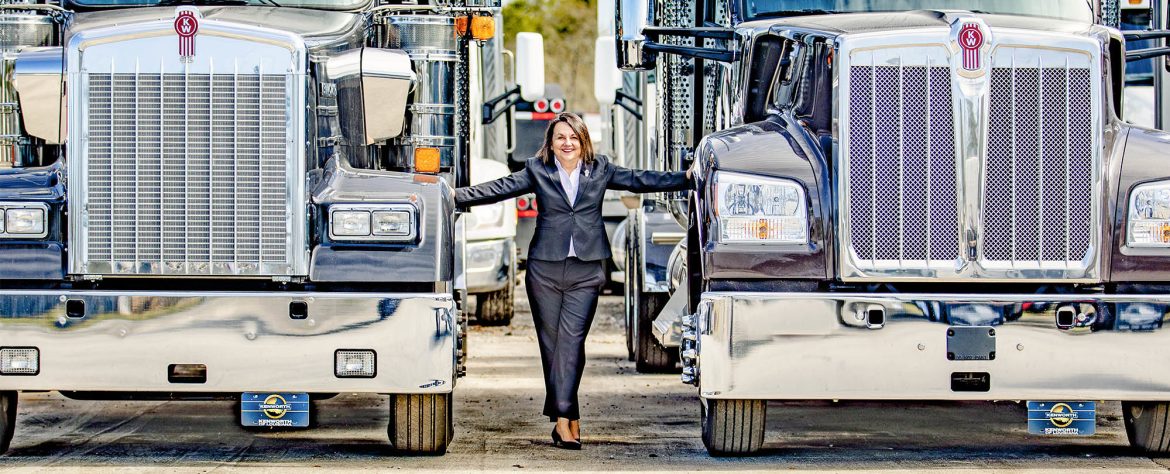Women in Trucking (WIT)
Putting more women behind the wheel in the trucking industry
Over the past few decades, many professions and job areas have seen an impressive increase in the number of women that have not only entered but have proved to succeed and prosper within their roles. Jobs that many women may not have once considered a viable career option have become an avenue for career growth and job success. Although encouraging to see, not every industry has attracted a high degree of interest from women.
One such sector that has lagged behind in attracting and recruiting women is the trucking industry. The need to encourage women to consider a trucking career is even more pressing given the safety issues that surround the industry. With more individuals, including women, properly trained for the job, the issue of safety may be addressed more efficiently.
The body that governs safety concerns is the Federal Motor Carrier Safety Administration. Their goal is to make our roads safer by ultimately creating a future with zero roadway fatalities. Their approach encompasses safer read design, safer vehicles, safer speeds, safer people, and post-crash care.
Other associations are stepping up to the plate and advocating the need for women to help address the overarching safety concerns held by the industry. For the Women In Trucking Association (WIT) the answer to conquer safety issues is simple; hire more women as commercial drivers.

Since 2007 the nonprofit organization has worked tirelessly (no pun intended) to increase the ranks of women employed in the trucking industry, to address obstacles that might keep women from succeeding, and to celebrate the success of our members.
Fifteen years ago, there was no data concerning women in the trucking industry. In fact, very few carriers even knew the percentage of female drivers in their own fleets. Women weren’t considered statistically significant, so data were not separated by gender.
The Department of Labor reports women comprise under eight percent of all commercial drivers, however, they include “driver sales workers” in their data. The Women In Trucking Association conducted a survey of members and found women make up just under fourteen percent of over-the-road drivers, which is primarily tractor trailers.
The WIT pushed for more information from trucking companies, insurance carriers, and the federal government regarding female drivers. Finding data was difficult, as much of the information available did not indicate the gender of the operator. In fact, even today the roadside inspection reports do not have a gender designation on the form.
As more women considered careers in the trucking industry, the association’s push for data intensified. Finally, as diversity and inclusion initiatives became more prevalent, companies started looking at the data and breaking it down by gender.
Trucking company executives are in agreement that their female drivers are extremely safe. WIT has listened to anecdotal evidence that female drivers have been better with customers, better with the paperwork, and have taken better care of the equipment as well as demonstrating that they have been much easier to train. Although the WIT has appreciated this feedback, it remains difficult to tout the benefits of female drivers without real data.
In 2018, the American Transportation Research Institute released its crash causation study which used roadside inspection data (and cross-referenced their commercial driver’s license to get the gender data) to review 439,260 roadside inspection reports. They evaluated the violations and then reviewed the drivers’ commercial driving history.
The results were broken down by age and gender. Women comprised 2.45 percent of the sample. However, the data included nearly 11,000 female drivers. The conclusion is notable, as their summary found that the driver’s gender had the most significant impact on safe driving. Men were 88 percent more likely to have a reckless/careless/inattentive or negligent driving conviction than women.

Men were 73 percent more likely to fail to obey a traffic signal and 40 percent more likely to be convicted of ANY offense. The World Health Organization reported that “masculinity” may be hazardous to health and cited risky driving as one factor.
Research in the United Kingdom by the University of Westminster reported that men make up 95 percent of all commercial drivers in their study. Dr. Rachel Aldred studied different modes of transportation, from bicycles to motorcycles, buses, cars, and commercial trucks. She found trucks to be involved in one out of every six deaths on the road.
Dr. Aldred included gender in her research and found that men were, “twice as dangerous to other travelers.” She said that male commercial drivers were four times as dangerous as women. Her recommendation was for, “policymakers [to] consider policies to increase gender balance in occupations that substantially involve driving, given the greater likelihood that road users will be killed if men rather than women are driving…”
The Women In Trucking Association firmly agrees that more women should become professional drivers, not only because they will make the roads safer, but because these are great jobs for both women and men.
The biggest challenge for the WIT remains convincing women they can do this job. There is a misconception that trucking is a “man’s career.” Many women assume they would need to be mechanically minded, or exceptionally strong to handle the cargo. The WIT argues that this isn’t the case anymore. Most loads are not touched by the driver, who truly transports the trailer from the shipper to receiver.
Some of the ways the Women In Trucking Association addresses these misconceptions include its Image Team drivers who provide media interviews, conduct product assessments, and do ride-along with legislators, regulators, and members of the media. They can share their insight one-on-one with someone who may be able to create change in the industry.
The WIT also created a driver ambassador program which includes a trailer we call WITney. Inside the trailer is a learning environment including videos and touchscreen tablets that offer interactive sessions about things like the myths about trucking, or what careers are available in the industry. At the front of the trailer is a simulator where visitors can sit in a virtual driver’s seat and see what it’s like to operate an 80,000 vehicle in actual traffic conditions.
In an effort to reach the next generation, the Women In Trucking Association created a truck driver doll named Clare. The doll has her own Facebook group and a following of drivers who take her around the world on their travels. Clare has been photographed checking tire pressure, visiting shippers, and stopping at a truck stop.
WIT learned that the Boy Scouts had a transportation patch, but the Girl Scouts did not. To address this issue WIT worked with the greater Chicago and Northern Indiana Girl Scout region to create a supply chain patch called “Trucks are for Girls.” The association’s first event included 84 young girls who visited the Olive Harvey driver academy in Chicago toured the tractor trailers, spoke with the drivers, and had fun learning about trucking careers.
The WIT activity book is called, “Scouting for Cookies,” and follows the supply chain as the grain from the field is loaded on a truck and shipped to the bakery, and then moved to the packaging on a truck, and again to the warehouse and on to the Girl Scout who delivers the cookies. To date, over 1,200 Girl Scouts have earned the patch and learned about trucking in the process.
Ultimately, the WIT strongly believes that it can change the industry by increasing the ranks of women as drivers, dispatchers, safety directors, and CEOs and this remains the mission of the Women In Trucking Association.
For more information visit www.womenintrucking.org
AT A GLANCE
Women in Tricking (WIT)
What: WIT is bringing gender diversity to transportation
Where: Plover, Wisconsin
Website: www.womenintrucking.org



